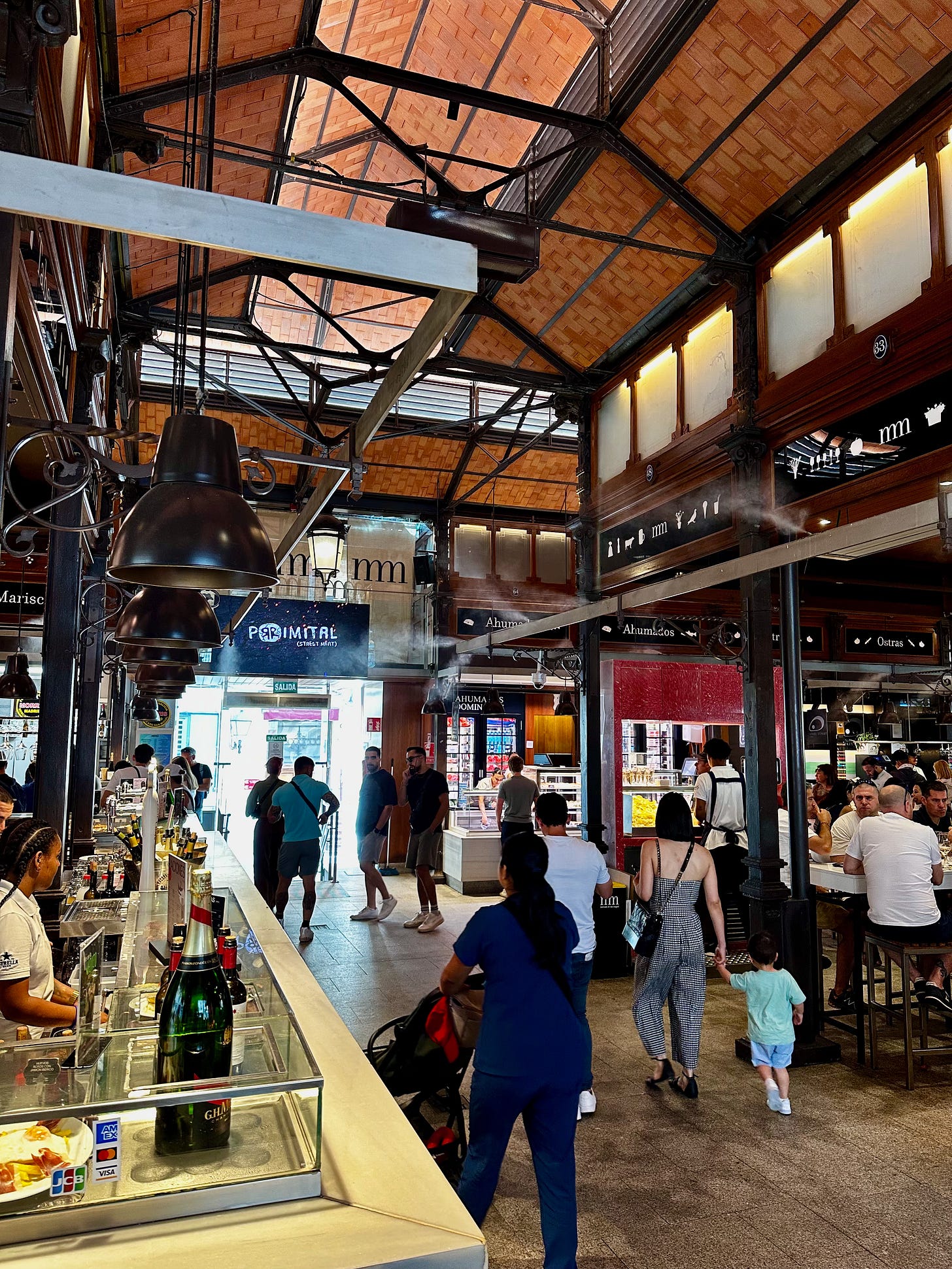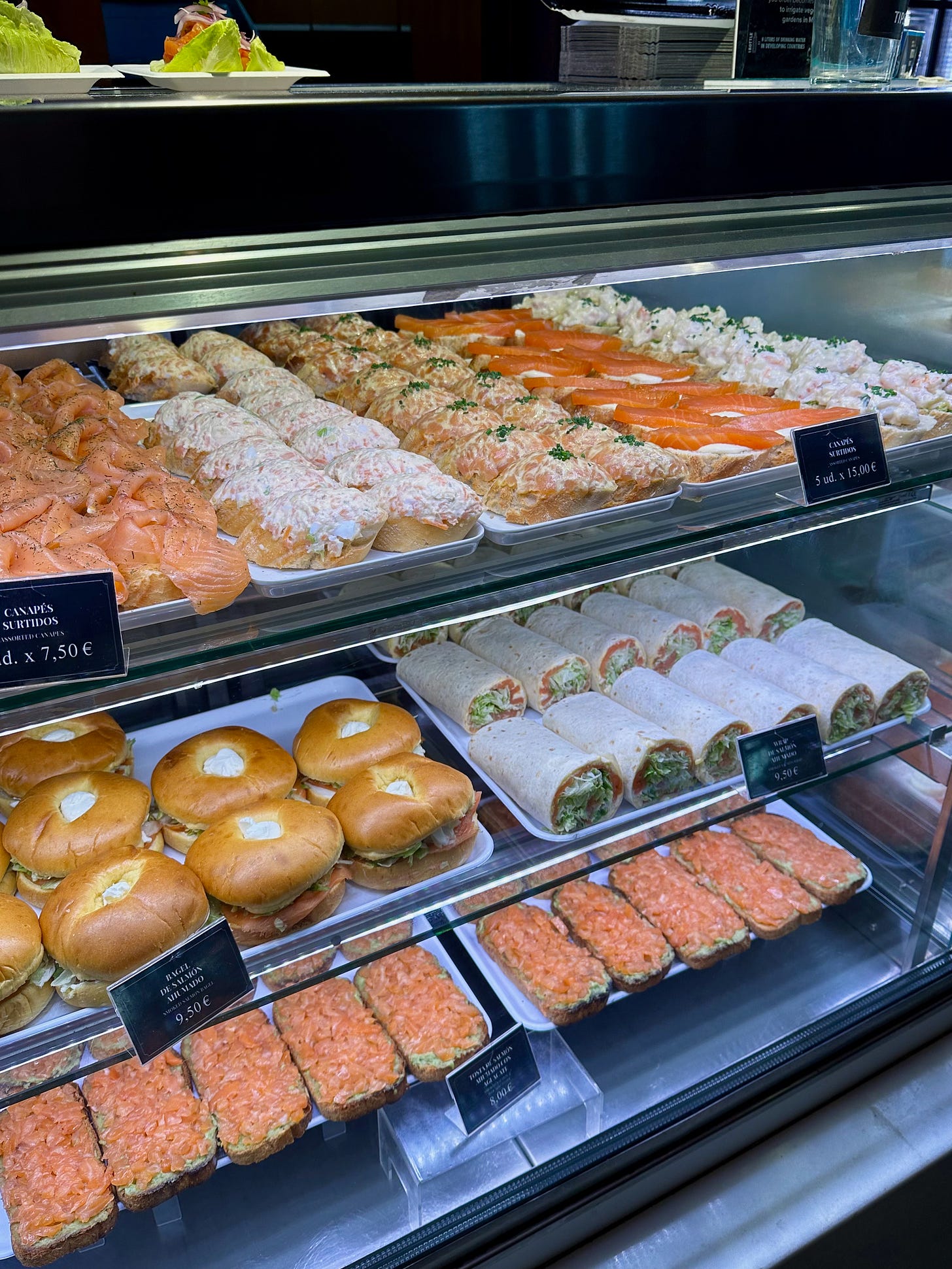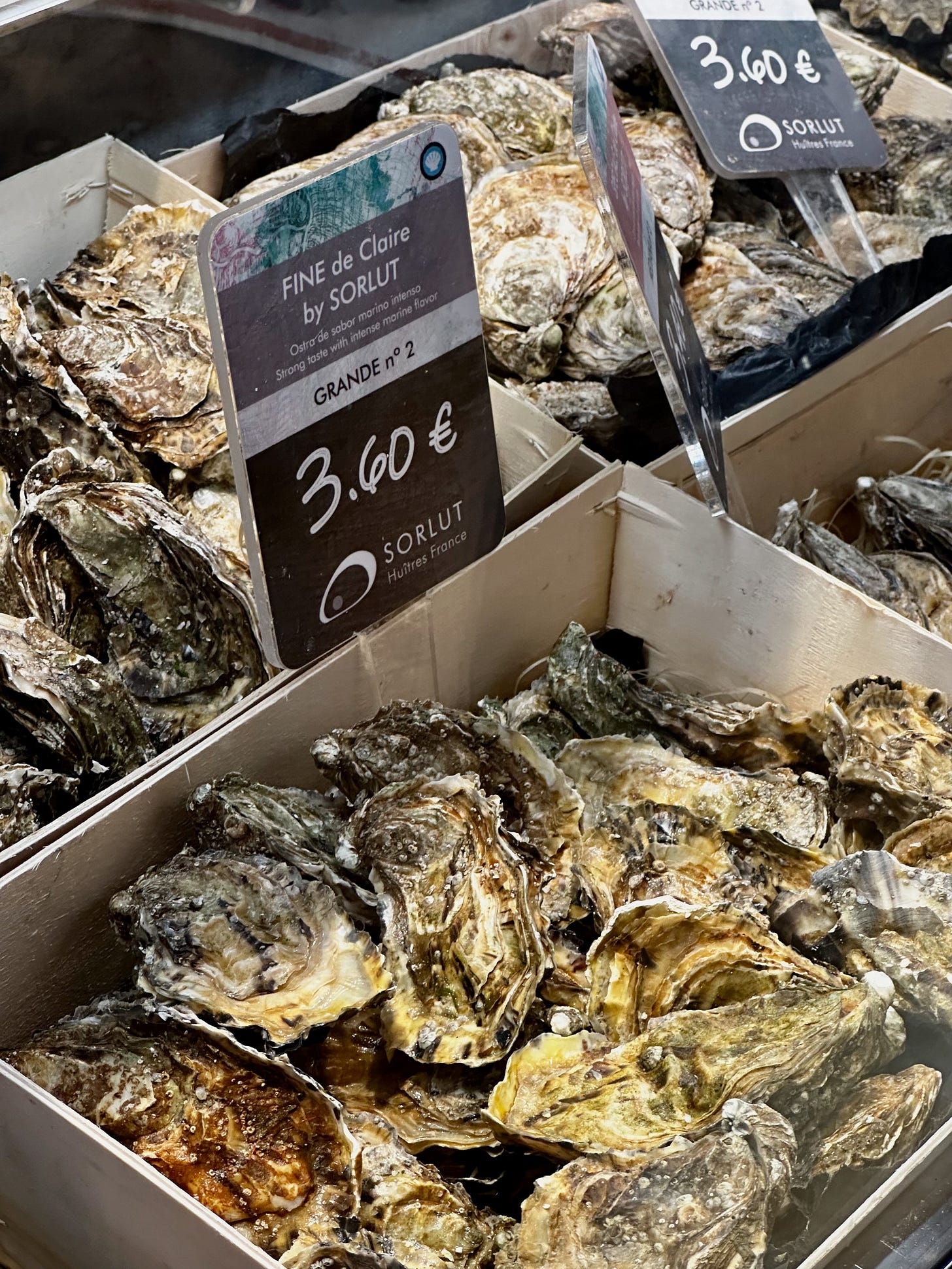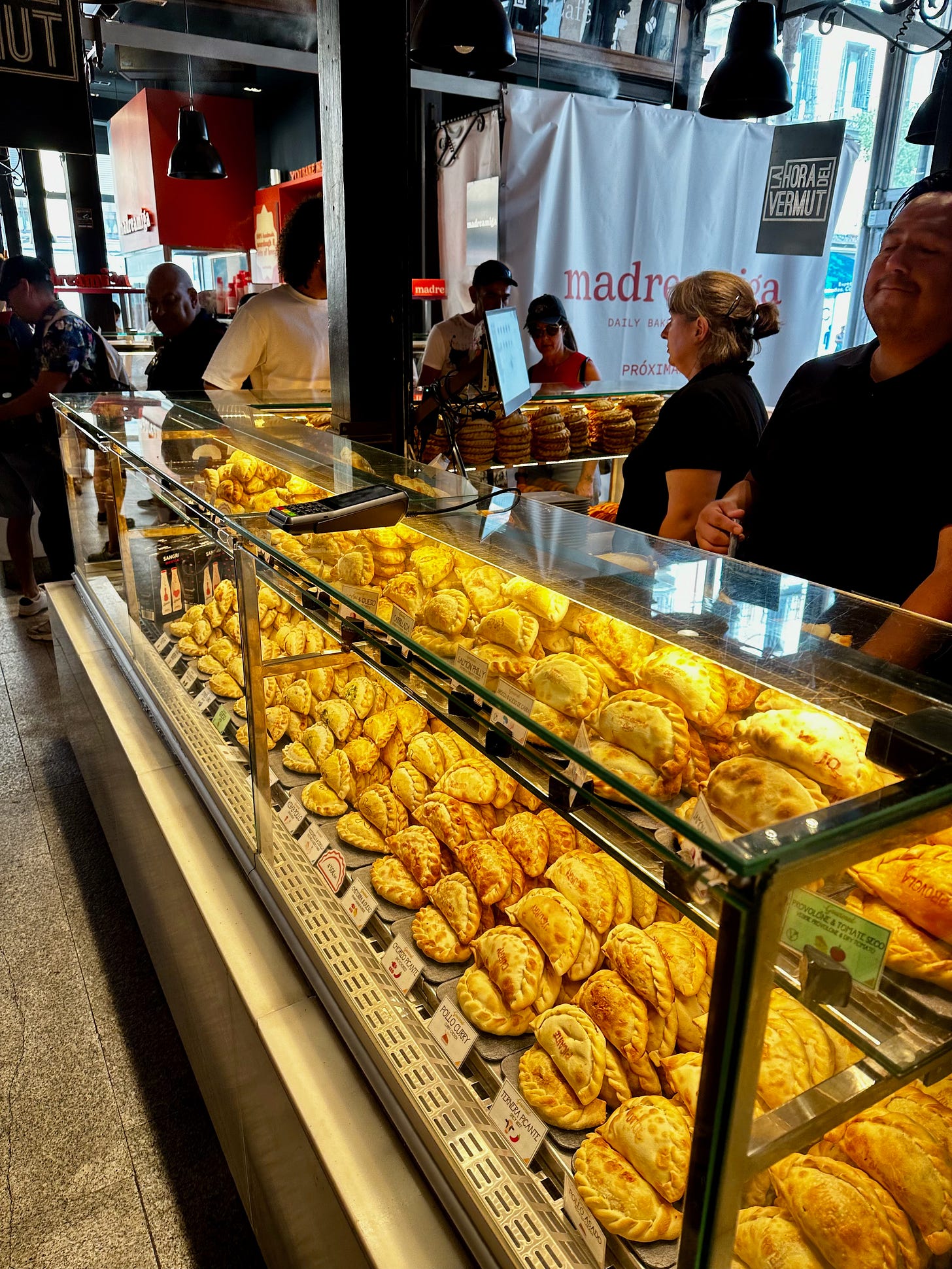A Day at the Iron Heart of Madrid
Mercado de San Miguel: A Gourmet Memory Machine
The day had already started with promise—an early stroll through La Latina, sunlight slipping through narrow lanes, the scent of toasted bread and orange peel rising from hidden kitchens. Madrid has this way of waking up slowly, like a café con leche still swirling in the cup. But by the time I reached Mercado de San Miguel, just steps from the western edge of Plaza Mayor, the city was fully awake—and so were my senses.
At first glance, the market looks more like a train station from a century ago than a culinary playground. The intricate cast-iron structure, with its glass-enclosed facade and wrought-metal latticework, gives it an industrial elegance that’s hard to miss. And that’s not accidental.
Constructed in 1916, Mercado de San Miguel was one of the first iron-and-glass market halls in Madrid, inspired by the great European markets of Paris and London. Its architect, Alfonso Dubé y Díez, was part of a generation that believed food, trade, and architecture could coexist with grace. Back then, it was a wholesale market—fresh fish, fruits, vegetables, and meats stacked high for the city’s chefs and housewives alike. But as the decades rolled on and supermarkets began to spread, San Miguel, like so many traditional markets, fell into decline.
It was nearly lost. But in 2009, after years of neglect, a group of private investors stepped in to restore and reinvent it—not as a relic of the past, but as a living tribute to Spain’s culinary future. Today, it’s less about stocking up your pantry and more about indulging every craving you didn’t know you had. And yes, it’s expensive. But we’ll get to that. I stepped inside, and Madrid hit me in stereo.
The first stall I encountered offered freshly shucked oysters on crushed ice, their briny scent mingling with the tartness of lemon wedges and the mineral fizz of chilled cava. Next to it, a Basque vendor handed out gildas—those iconic skewers of green olives, pickled peppers, and anchovies. He offered one to me with a knowing smile. “Una explosión,” he promised. It was.
The market is laid out like a maze, but every turn is a reward. You want seafood? There’s a stall with octopus carpaccio drizzled in olive oil and paprika so smoky it lingers in the air. Craving jamón? You’ll find entire legs hanging above a cutting board where a man in a black apron carves razor-thin slices of Jamón Ibérico de Bellota, explaining that the pigs were fed solely on acorns in the oak forests of Extremadura.
Everything here has a story—and a price to match. A cone of ham costs as much as a full plate in a local tavern. A plate of paella will run you nearly €10. And the wines? You could easily spend €6–€8 per glass. But still, the place is packed. Tourists, yes—but also locals. Because Mercado de San Miguel isn’t just about the food. It’s about the spectacle.
I watched a group of older women cluster around the croquetas stall, laughing as they tried to decide between truffle, mushroom, or oxtail. A group of university students split a sampler of quesos artesanos, their conversation bouncing between English and Spanish. Nearby, a sharply dressed couple sipped vermouth from tiny glasses while picking at gilded sardines on toast.
There’s a rhythm to the market—something between a dance and a parade. And while the food is the headline act, the setting is just as seductive. Those cast-iron beams, painted a glossy black, stretch toward the ceiling like tree trunks. The glass walls bathe the market in natural light, catching the gleam of wine bottles and glazed pastries. You can almost feel the ghosts of early 20th-century traders walking among the tapas trays.
I took a short break near the back, looking for the washrooms—which, I learned, are only accessible using a code printed on your receipt. It’s a minor inconvenience, but a clever nudge to make at least a small purchase before seeking relief. Besides, it gave me a good excuse to grab a small plate of Manchego and a glass of Rioja. Call it a practical indulgence.
And about that price tag—yes, Mercado de San Miguel is undeniably expensive. This is not where you come to eat cheap. But value is not always measured in euros and cents. What you get here—besides the finest cheeses, freshest seafood, and expertly poured vermouth—is Madrid on a plate. You get atmosphere. You get theatre. You get to taste, for a fleeting moment, what makes this city pulse. The entire market is a curated experience, and the price includes front-row seats to a living, breathing culinary performance.
I ended my visit where I began—at the edge of the crowd, watching it move. With one last stop, of course: a cup of dark, velvety hot chocolate and a handful of churros, still warm, crisp outside and tender within. The chocolate was so thick my spoon stood upright in the cup. My last act? Dipping a churro and closing my eyes. Madrid never tasted so good.
As I stepped outside into the golden light of late afternoon, the iron structure glowed behind me, not just as a monument to what was, but as a beacon of what can be when you mix history with hospitality and a touch of indulgence. Expensive? Absolutely. But worth it? Every single cent.
Location: Mercado de San Miguel
Address: Plaza de San Miguel, s/n, 28005 Madrid, Spain
Located just a few steps west of Plaza Mayor, and easily reached on foot from Sol or La Latina metro stations.
Opening Hours:
Sunday to Thursday: 10:00 AM – 12:00 AM
Friday & Saturday: 10:00 AM – 1:00 AM














